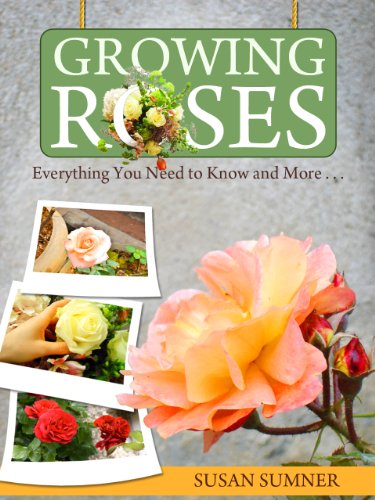
Growing Roses – Everything You Need to Know and More. . .
1.Roses may be grown in any well-drained soil with optimum sunlight.
2.Most Rose varieties are grown by budding on an understock (lower portion of a plant) propagated from seeds or cuttings. Order rose seeds online and let your garden be filled with the marvellous color and fragrance of roses.
3.Clay soils, warm temperatures are always preferred, and the rose plants grow best when not set among other plants.
4.Cow manure is the preferred fertilizer for Rose cultivation, but other organic fertilizers, especially composts, are also used.
5.Rose plants usually require severe pruning, which must be adapted to the intended use of the flowers.
6.Trim off all broken and bruised roots on the Rose plant, cut top growth back to 6 to 8 inches.
7.Dig planting holes at least 6 inches deeper to accommodate the roots of the Rose plant without crowding or bending.
8.Mix 1 tablespoonful of fertilizer with the soil placed over the drainage material.
9.Cover this mixture with plain soil, bringing the level to desired planting depth.
10.Make a mound in the center to receive the Rose plant.
11.Set Rose plant roots over this mound, spread the roots, and fill in with soil.
12.Firm the soil tightly 2 or 3 times while filling the hole.
13.When watering Roses, soak the soil to a depth of 6 to 8 inches, do not merely sprinkle.
14.When it comes to fertilizing your roses, Provide a balanced diet to your roses. See what your plant is deficient in and try to include them in the fertilizer. Timing is also an important part to maximize the benefit of your fertilizer so that the nutrients are available to the plant when it needs it most during the active growing and blooming stage.
15.Mulching during the summer will eliminate weeds among Rose plants. Mulches should be applied 2 or 3 weeks before the Roses come into bloom.
16.Winter mulching with straw, peat moss, or other material is advisable. This mulch regulates the soil temperature and tempers the effects of freezing and thawing on the Roses.
17.Pull soil up around each Rose plant to a height of about 6 inches after the first frost.
Roses prefer a rich loamy soil that drains well. They do not like to have their root systems in soggy wet soil, but cannot be allowed to dry out either. A nice pliable moist feel to the soil is what is desired.
Nature has a way of telling the gardener when the soils are good. If you have been successful at building rose garden soil, the earthworms come into the soil and are easily found there. The earthworms help aerate the soil, thus keeping the oxygen flowing through it and keeping the entire biological process in good balance, working as a well oiled machine so to speak.
The worms further enrich the soil with their castings (a nice name for their poo…). It is like getting free fertilizer for your roses and who does not like that! Basically, a good soil makeup for roses is said to be: one-third clay, one-third coarse sand and one-third decomposed organic matter.
When mixed together, these will give you the right soil blend for providing the best of soil homes for your rose bush’s root systems. Once you have felt the texture of this properly blended soil, it should go through your hands and fingers, and you will easily recognize it from then on.
If you have any information,questions, or feedback you would like to include in this webpage.
Please email momo19@naturekingdoms.com or leave your comments below.